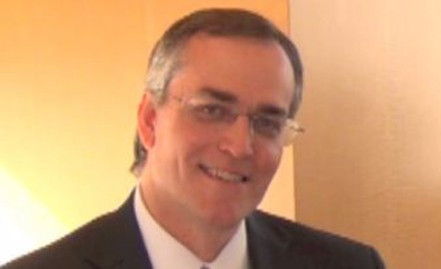Lexmark CEO: Software a Boon but ‘Headwinds’ Trim Revenue Growth

Lexmark International CEO Paul Rooke predicted the printer giant will keep boosting profits because of software advantages but warned economic headwinds may trim fourth-quarter revenue.
Our core business is strong, Rooke said in an exclusive interview with IBTimes. But we're not immune from the adverse economic environment we're in. We see some headwinds ahead.
Last month, Lexmark reported third-quarter net income dipped seven percent to $67 million, or 86 cents a share, as revenue inched up slightly to $1.03 billion. The results were less than Wall Street expected and shares of the Lexington, Ky.-based company fell six percent.
Neverthless, Lexmark shares, which closed Wednesday at $31.38, are about even where they were after the earnings miss last week. For the year, they are down nearly 10 percent.
Rooke, 52, who succeeded Paul Curlander, 58, as Lexmark CEO last year, said the company's focus on selling higher-margin laser printers to enterprises and exiting the low-margin inkjet printer business for consumers, is a benefit.
So do last year's $280 million purchase of Perceptive Software of Shawnee, Kan., with its ImageNow platform for content management, and last month's $50.2 million acquisition of Pallas Athena of the Netherlands, Rooke told IBTimes.
The software bolsters Lexmark's core business, he told IBTimes in New York, making it more competitive against industry leader Hewlett-Packard, as well as smaller rivals including Eastman Kodak, Canon and others.
One result: Lexmark's latest gross margin fattened to nearly 37 percent from 35.4 percent a year earlier.
Still, Lexmark shares were pounded down six percent after Rooke forecast a slight downtrend in current quarter revenue. Rooke said the company can't avoid the current economic crisis in Europe, currency conversion issues as well as potential fallout from the Thailand floods.
Sixty percent of our sales are outside the U.S, Rooke told IBTimes, noting particularly strong business in Latin America, especially Brazil, as well as in Asia.
Until 1991, Lexmark was the printer and printing systems division of IBM, as well as the maker of the IBM Selectric typewriter. IBM sold the unit to New York-based buyout firm Clayton, Dubillier & Rice which kept IBM's manager Marvin Mann in place.
Under Mann, Lexmark conducted its $340 million 1995 IPO. Mann's deputy, Paul Curlander, succeeded him as CEO and Rooke, a Texas-born executive with a mechanical engineering degree from the University of Michigan, succeeded Curlander a year ago.
Like Mann and Curlander, Rooke is also an IBM alumnus. He ran Lexmark's ink and toner division, laser printer division and inkjet division before being tapped as president of imaging solutions.
Now, he said, Lexmark intends to focus more on new software and service verticals, such as health care, financial services and education, which all require printers but can tap the company's new software to use the cloud for faster and cheaper applications.
Also, Rooke said he wants to keep rewarding shareholders. Besides plans to buy back as much as $125 million in shares this quarter, the same as last quarter, Lexmark now plans to pay a 25-cent quarterly dividend.
Meanwhile, Rooke declined to say whether Lexmark had looked at any of the 1,100 patents currently being auctioned by rival Eastman Kodak. Kodak is expected to report third-quarter results Thursday.
Lexmark's market capitalization is $2.42 billion; its enterprise value is $1.8 billion.
Contact David Zielenziger at d.zielenziger@ibtimes.com
© Copyright IBTimes 2024. All rights reserved.






















